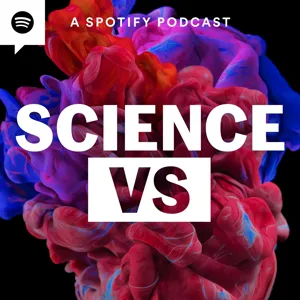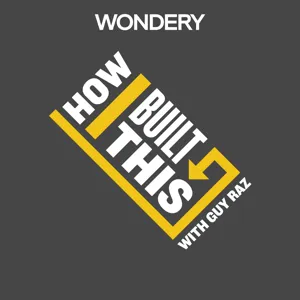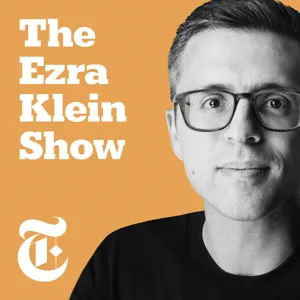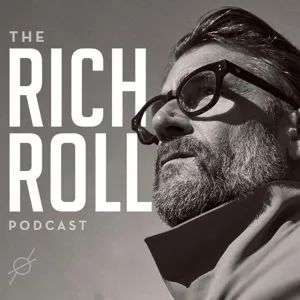Podcast Summary
Plant-based Milks: Environmental Impact and Controversies: Research shows that oat milk has the least environmental impact among plant-based milks, while rice milk has the most. Almond milk, despite popularity, has a significant water footprint. Consumers should consider environmental impact, taste, and nutritional content when choosing between traditional dairy milk and plant-based milks.
The debate over plant-based "milks" and their environmental impact is ongoing. Podcasts like Ologies provide entertaining insights into various scientific fields, including the study of alternative milks. These milks, including soy, almond, rice, oat, macadamia, and cashew milk, have gained popularity due to their perceived environmental benefits. Sales have more than doubled in the last decade, but the FDA has questioned whether they should be called milks at all since plants do not lactate. Researcher Joseph Poor, who studies milk's environmental impact at the University of Oxford, shared insights from his extensive database on milk farming's environmental effects. His research compared dairy milk and soy milk, but he also provided data on oat, rice, and almond milks. The results showed that oat milk had the least environmental impact, while rice milk had the most. Almond milk, despite its popularity, had a significant water footprint due to the large amount of water required to grow the almonds. Overall, the choice between traditional dairy milk and plant-based milks depends on individual preferences and environmental concerns. Consumers should consider the environmental impact, as well as other factors like taste and nutritional content, when making their decisions.
Dairy milk requires more land than plant-based milks: Dairy milk has a larger environmental footprint than plant-based milks due to greater land usage and greenhouse gas emissions.
When it comes to the environmental impact of plant-based milks, dairy milk stands out as the least sustainable option. According to a large-scale study, dairy milk requires significantly more land than other plant-based milks, with an average of 9 times more land needed to produce a single glass. Additionally, dairy farming contributes greatly to greenhouse gas emissions, occupying an area the size of Brazil globally. While other plant-based milks like almond, rice, soy, and oat milk also have their own environmental challenges, such as water usage for almond milk and greenhouse gas emissions for rice milk, they generally have a smaller environmental footprint compared to dairy milk. Therefore, opting for plant-based milks instead of dairy milk can contribute to reducing the overall environmental impact of our food choices.
Comparing the environmental impact of different plant-based milks: While each plant-based milk has unique environmental concerns, they're generally more sustainable than dairy milk. Choose based on personal preferences and specific environmental impact concerns.
While plant-based milks like almond, rice, soy, and oat have their individual environmental concerns, they are still more sustainable options compared to dairy milk. However, it's important to note that each type of plant-based milk has its unique impact on the environment. For instance, growing rice in paddies leads to methane emissions due to bacteria in the floodwater. This methane production is a hidden environmental cost of rice milk. On the other hand, producing almond milk requires a significant amount of water, while soy milk consumption can lead to deforestation in certain areas, such as the Amazon. Lastly, oat milk and soy milk require more land usage compared to other plant-based milks. Despite these environmental concerns, Joseph, the expert in the discussion, emphasizes that choosing any of these plant-based milks is still a better choice than dairy milk, which produces more greenhouse gas emissions, uses more water, and requires more land. Ultimately, the best choice depends on individual preferences and the specific environmental impact concerns one values most. However, it's essential to be aware of the environmental costs associated with each type of milk and make informed decisions.
Switching from dairy milk to plant-based alternatives can save a huge amount of land, greenhouse gases, and water: Making a small change like switching to plant-based milk saves significant resources, equivalent to everyone giving up showers for a year
Making a small change in your daily consumption, such as switching from dairy milk to plant-based alternatives, can have a significant positive impact on the environment. This was highlighted in a discussion using extreme numbers, which revealed that such a switch could save approximately half a million square kilometers of land, a billion tons of greenhouse gases, and a vast amount of water. This is equivalent to everyone in the world giving up showers or baths for a year. While this may seem insignificant in our daily lives, especially in urban areas, the numbers paint a compelling picture of the importance of making sustainable choices. This episode was produced by Meryl Horne, Wendy Zuckerman, Rose Rimmler, Odelia Rubin, Caitlin Surry, and was edited by Blythe Terrell, with fact-checking by Michelle Harris and music by Emma Munger and Bobby Lord. We also spoke to experts Adrian Williams, Niels Junghloff, Frank Mitloehner, and Adam Dronowski for their insights on the topic. Stay tuned next week as we explore the complex issue of gentrification.






